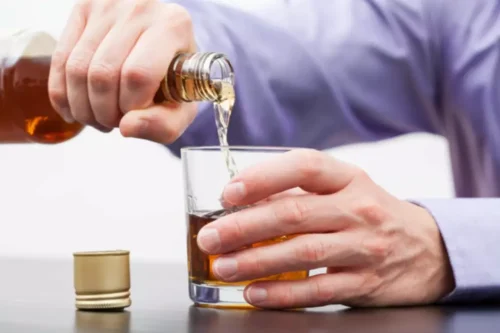RECO Institute, with its comprehensive approach to structured sober living, emphasizes not only the immediate recovery from substance use disorders but also crafting a sustainable vision for a sober future. This focus on fostering independence, outlining strategies for ongoing well-being, and leaving a lasting legacy highlights the institute’s dedication to transforming lives. Effective communication and strong interpersonal skills are vital for navigating the complexities of life after addiction. Training in communication and interpersonal skills is an integral part of the curriculum, helping individuals learn how to express themselves clearly, listen actively, and resolve conflicts peacefully.
Benefits of a Sober Community
Effective sober house management involves regular check-ins with residents, facilitating house meetings, and ensuring that everyone partakes in the community’s daily activities and responsibilities. They also play a crucial role in connecting residents with external support services and addiction relapse prevention resources, reinforcing the recovery journey outside the confines of the sober living residence. Sharing the experience of addiction and recovery helps residents feel like they belong and are understood.
How Samba Recovery Incorporates Music Therapy for Healing
Security measures, house rules, and a culture of mutual respect work together to foster a sense of safety that can be incredibly healing for residents. In this environment, individuals can focus on their recovery without the added worry of external threats or exposure to substance use. Sober living homes instill a sense of accountability through structured daily routines and clear rules. Residents are often required to participate in household chores, adhere to a curfew, and attend recovery meetings. These structures aren’t designed to be punitive but rather to cultivate a disciplined lifestyle conducive to sobriety.
Transitioning from an intensive residential treatment program to a less structured living environment can be a daunting step for many in recovery. Recognizing this challenge, RECO Institute offers a seamless continuum of care that bridges the gap between these two stages of recovery. Their sober living programs provide the necessary structure and support, helping individuals acclimate to a sober lifestyle in a gradual, supported manner. These sober living residences cultivate a supportive environment where residents can reinforce the skills and coping mechanisms learned during residential treatment. By doing so, RECO ensures that individuals are not left to navigate the complexities of early recovery alone but are instead guided through each step with a network of support tailored to their ongoing needs. Sober living homes play a pivotal role in bridging the gap between structured inpatient treatment and independent living for individuals recovering from substance use disorders.
This section delves into the essential strategies for overcoming obstacles in the nascent phase of recovery. Of those who seek treatment for drug dependency, between 40% and 60% eventually relapse. This is due to a number of factors but is commonly brought on by a lack of stability and structure outside of rehab. After getting out of rehab, you should pursue a structured sober living environment, maybe even in the form of a structured sober living home. Regular interactions like check-ins and meetings support individuals in staying dedicated to their recovery path.
- Sober living homes understand this fundamental need and strive to provide an environment that not only supports but enhances your recovery process.
- Structured support offered by sober living homes is designed to enhance residents’ recovery journeys, facilitating a successful transition back into society while emphasizing accountability and community support.
- By organizing group outings, sports leagues, and hobby-based gatherings, these homes provide residents with opportunities to have fun and relax without the presence of substances.
- This duration is essential as individuals transition from formal treatment to independent living.
- If you or someone you love is struggling with addiction and needs the support and structure of a sober living home, contact us today to learn more about our program.
- These sober living residences cultivate a supportive environment where residents can reinforce the skills and coping mechanisms learned during residential treatment.
Studies have found that residents often see improvements in mental health, job status, and overall quality of life. These results show that sober living environments can help with not just addiction but also other related issues and health factors. However, many sober living homes require or strongly encourage residents to join outpatient treatment or support groups like Alcoholics Anonymous or Narcotics Anonymous. Sober living residents must also follow house rules, including attending house meetings and helping keep the shared space clean. Structured residences that promote sober living play a vital role in the recovery process. They offer a supportive environment that fosters personal development and accountability.
By integrating practices that promote healing in the body, mind, and spirit, RECO Institute sets the foundation for a well-rounded recovery journey. This holistic framework is pivotal in nurturing the growth and resilience required to navigate the challenges of sobriety. A structured daily routine is critical in early recovery, offering predictability in a phase of life that often feels uncertain and overwhelming. In RECO Institute’s sober living residences, this structure encompasses various activities designed to reinforce sobriety and promote personal growth. From waking up at a consistent time and participating in house chores to attending therapy sessions and recovery housing meetings, each aspect of the daily schedule is purposefully planned. These routines help instill discipline, reduce anxiety, and create a sense of accomplishment.
Levels of Care
- This commitment extends beyond the absence of substances; it includes creating a space where individuals feel physically safe and emotionally supported.
- Effective communication and strong interpersonal skills are vital for navigating the complexities of life after addiction.
- It’s a vision that goes beyond the confines of structured sober living, inspiring a future where sobriety, wellness, and fulfillment are within reach for all.
- During these events, the broader recovery community, including current residents, alumni, staff, and family members, comes together to honor the hard work and dedication of individuals.
Individuals in structured sober living residences participate in daily routines, engage with peer support groups, and have access to professional guidance and therapy. This structured approach provides not only a bridge between intensive treatment settings and independent living but also a supportive network that is instrumental in fostering long-term sobriety. The journey of recovery is profoundly personal, yet the value of going through it with the support of others who understand cannot be overstated. Peer support in recovery offers empathy, encouragement, and accountability, elements that are vital for sustaining long-term sobriety. Within the supportive environment of a sober living residence, individuals are surrounded by peers who are also committed to a sober life.
- Residents who adhere to house rules and engage actively in community recovery efforts often benefit the most.
- The focus at living facilities is to establish an environment that is caring and encouraging.
- Factors such as prior treatment experiences, personal lifestyle choices, and mental health conditions also play significant roles in determining fit.
- Recovery from addiction is a complex and multifaceted process that necessitates a supportive and stable environment for success.
- The institute’s philosophy hinges on the belief that recovery extends beyond physical abstinence, it involves the rehabilitation of the mind, body, and spirit.
Transitioning into a sober lifestyle can be challenging, but with the right support and environment, maintaining sobriety becomes more attainable. Sober living homes provide that crucial support system and structured environment that can sober house make all the difference. Here, we explore twelve key ways these homes help individuals in recovery prevent relapse and stay on the path toward long-term sobriety. In structured sober living environments, the role of sober house management is pivotal in relapse prevention. Managers and staff are not just administrators but are integral in creating a nurturing and safe environment.
Powerball Can Lead to Gambling Addiction
The variety within sober living environments ensures that there are options to meet different needs, which is crucial in the recovery process. By selecting a sober living home that aligns with individual characteristics and recovery goals, residents can facilitate a smoother transition to sober living. Yes, many sober living homes cater to distinct demographics, focusing on gender, age, or specific recovery needs.
The Importance of Celebrating Small Wins in Recovery
This is an excellent opportunity to reconnect with the program, re-establish positive relationships within the recovery community, and celebrate our shared commitment to recovery. Contact us today to find out how Transitions Sober Living can support you or your loved one on the path to recovery. We are here to answer your questions, discuss our program offerings, and help you take the next step towards long-term recovery. If you or someone you love is struggling with addiction and needs the support and structure of a sober living home, contact us today to learn more about our program.
This ongoing legacy is manifested in the vibrant lives they lead, the positive contributions they make to their communities, and the support they extend to others on the path to recovery. This peer support model is instrumental, as it provides new residents with tangible examples of successful recovery and the reassurance that long-term sobriety is achievable. Alumni can share their strategies for managing challenges and offer insights into making the most out of the sober living experience. Their involvement creates a bridge between the structure of sober living and the realities of independent, sober life, helping new residents prepare for the transition with confidence. Structured sober living environments are very important for people recovering from addiction. Engaging in ongoing therapy, education, and personal development activities helps reinforce your commitment to sobriety and ensures you have the tools needed to face challenges head-on.
In sober living homes, you’re not just renting a room; you’re investing in your future. The safe and supportive environment acts as a buffer against relapse, providing the resources and support needed to sustain long-term sobriety. This nurturing atmosphere is crucial during the delicate transition from treatment to the real world, ensuring you have the tools and support to navigate your new sober life successfully. Embarking on the journey to sobriety isn’t a solo trek; it’s a path best navigated with support and structure. That’s where sober living homes come into play, offering a bridge between an intensive treatment program and the realities of the outside world. These homes are more than just a place to stay; they’re a community focused on recovery and rebuilding lives.
Additionally, while the structured environment fosters accountability, some individuals https://www.inkl.com/news/sober-house-rules-a-comprehensive-overview may feel that the rules feel restrictive. Insurance coverage for sober living homes is generally limited since they are not classified as formal treatment programs in most policies. While some plans may cover outpatient treatments like therapy, residents often find themselves responsible for the majority of their living expenses. Government assistance, such as HUD grants, may provide support, but availability often falls short of meeting demand for sober living homes.






.jpg)
.jpg)